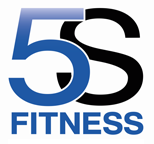By Ash Cox: 5S Coach / Redwood Performance
During our time as athletes or coaches we are bound to come across some sort of injury that will temporarily immobilise the limb. Most of these injuries occur in either our arms or legs, they are frustrating and can often lead to unwelcome deficiencies once the healing time has passed. That moment when you have a cast cut away from your leg and realise that your calf is the same size as your three year old sons brings tears to the eyes! Up to 25% of the immobilised limbs strength can be lost within 6 weeks. However, all is not lost.
Recent research suggests that unilateral training can be a way to not just maintain strength but also to reduce the amount of muscle atrophy. The strength gains whilst training the healthy limb can be directly mapped across to the immobilised limb. Although the reason for this phenomenon is not entirely pinned down, it is almost agreed on by all parties that it is by virtue of the central nervous system adaptations.
Sticking with the theme of lower limb immobilisation it is important to consider the musculature that will be directly affected by the period of immobilization. As coaches and athletes we should look both up and down the kinetic chain and incorporate the injured limb in its entirety. For example on the lower limb, glutes, hamstrings, vastus group, inverters and everters should all be considered and this is by no means an exhaustive list. Exercises on the healthy limb should be implanted as early as possible in order to maximize the potential to not only keep the CNS responses but also to maintain some muscle bulk. If an exercise programme is implanted early on, this will have a great effect on the rate of recovery.
Programme design does not need to massively suffer because of injury. Some examples of lower limb adaptations include single leg glute bridging, single leg machine work in the form of hamstring curls and leg extensions. Upper limb programme design in the unilateral format may benefit from smith machine (yes, I said smith machine!) bench press using the healthy limb and overhead presses using the same equipment.
I know some of the alternative methods don’t come across as flashy as a snatch or a full squat but let’s be realistic, you’re injured and you probably wouldn’t have even considered training at all!! Reducing strength loss and muscle atrophy will greatly improve your rate of recovery once your limb is free and will drastically reduce the chances of any secondary injury due to muscle imbalances.
Motivate the mind and the body will follow.

